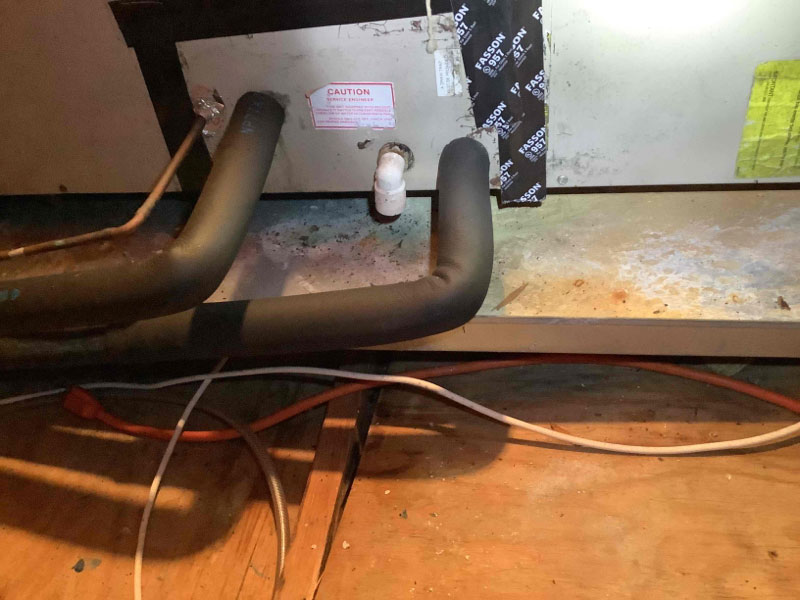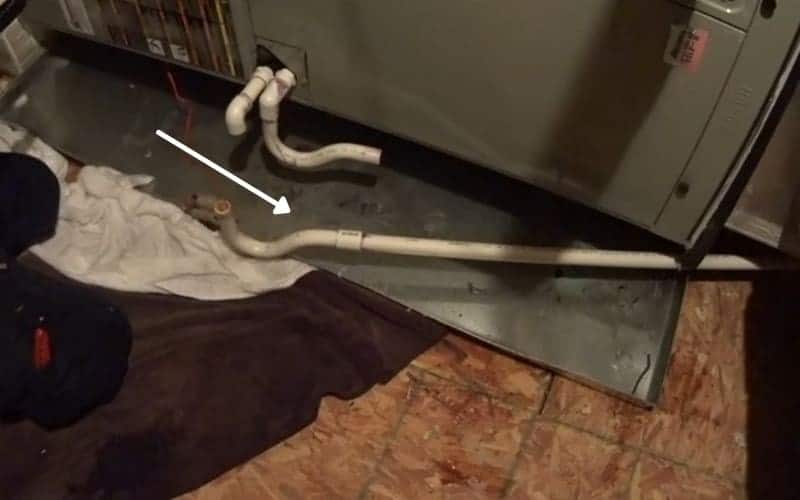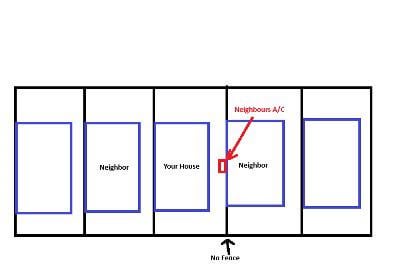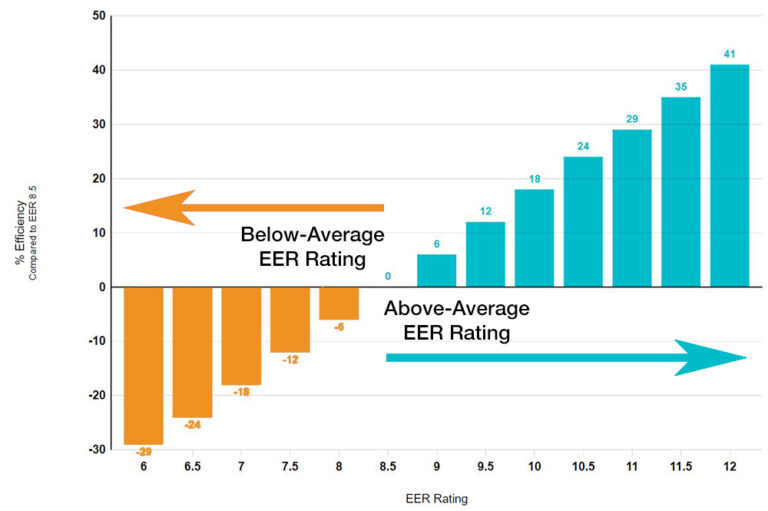Is It Normal To Have Water In AC Drip Pan? Expert Insights
Yes, it’s normal to have some water in your AC drip pan. Excessive water, however, indicates a problem.
Your air conditioner’s drip pan is designed to collect condensation formed during the cooling process. A small amount of water in the drip pan is typical and signifies that your AC is functioning correctly. Issues arise when there’s too much water or the pan overflows.
This could mean a clogged drain line, high humidity, or a malfunctioning component. Regular maintenance, including checking and cleaning the drip pan, ensures your AC operates efficiently. Understanding the signs of potential issues can save you from costly repairs and keep your cooling system in top shape. Always consult a professional if you notice persistent water accumulation.

Credit: www.sunriseacpro.com
Common Causes Of Water In Ac Drip Pan
Finding water in your AC drip pan can be concerning. Understanding the common causes can help you address the issue efficiently. Here are some reasons why water may accumulate in the AC drip pan.
Clogged Drain Line
A clogged drain line is a frequent cause of water in the AC drip pan. Dirt, algae, or mold can block the drain line. This blockage stops water from flowing out properly.
When this happens, the water backs up into the drip pan. It’s important to clean the drain line regularly. This ensures the water flows out smoothly.
High Humidity Levels
High humidity levels can lead to more water in the drip pan. The AC unit works harder to remove moisture from the air. This increases the amount of condensation.
The excess moisture collects in the drip pan. In areas with high humidity, this is a common occurrence. Check the humidity levels in your home to manage this issue.
Signs Of Excess Water
Noticing excess water in your AC drip pan can be alarming. It’s crucial to recognize the signs early to prevent further damage. Let’s explore some common signs of excess water.
Visible Overflow
One of the most noticeable signs is a visible overflow from the drip pan. If you see water spilling over, it indicates that the pan is too full. This situation can occur due to a clogged drain line or a faulty pump.
Water Damage
Another sign to watch for is water damage around the AC unit. Look for stains or wet spots on the floor, walls, or ceiling. These marks can indicate that water has been leaking from the drip pan for some time.
| Signs | Description |
|---|---|
| Visible Overflow | Water spilling from the drip pan. |
| Water Damage | Stains or wet spots near the AC unit. |
- Check for pooling water.
- Inspect for mold growth.
- Turn off the AC unit.
- Remove excess water from the pan.
- Inspect the drain line for clogs.
Potential Risks
Having water in your AC drip pan can seem harmless. But it can lead to serious issues. Here are some potential risks you should be aware of.
Mold Growth
Standing water in the drip pan can cause mold growth. Mold loves damp, dark places. Your AC unit can become the perfect spot for mold.
Mold can spread quickly. It can affect your indoor air quality. Breathing in mold spores can be harmful. It can trigger allergies and respiratory issues.
System Damage
Water in the drip pan can cause system damage. If the water overflows, it can damage other parts of your AC unit.
Water can corrode metal parts. It can also damage electrical components. This can lead to costly repairs.
Regular maintenance can help prevent these issues. Check your drip pan often. Ensure it stays dry and clean.

Credit: apolloheatingandair.com
How Ac Drip Pans Work
Understanding how AC drip pans work is crucial for maintaining your air conditioning system. A well-functioning drip pan ensures that your AC unit operates efficiently. This section will cover the condensation process and the drainage system involved in AC drip pans.
Condensation Process
Air conditioners cool your home by removing heat and moisture. This process results in condensation. The moisture from the air forms water droplets. These droplets collect in the evaporator coil. From here, the water drips down into the drip pan.
A properly functioning drip pan will catch all the water. This prevents water damage to your AC unit. It also stops water from leaking into your home. The more your AC runs, the more water it will collect in the drip pan. This is normal and shows that your AC is working correctly.
Drainage System
Once the water collects in the drip pan, it needs to be drained away. The drip pan is connected to a drainage system. This system usually includes a drain pipe. The drain pipe channels the water away from your AC unit.
A clear drainage system is vital for AC efficiency. If the drain pipe is blocked, water will overflow. This can cause damage to your AC unit and your home. Regular maintenance helps keep the drainage system clear. This ensures that your AC unit runs smoothly.
Here’s a simple table to summarize the components:
| Component | Function |
|---|---|
| Evaporator Coil | Collects moisture from the air |
| Drip Pan | Catches the water droplets |
| Drain Pipe | Channels water away from the AC unit |
Regular checks and cleaning of these components ensure the efficiency of your AC unit. Proper maintenance prevents potential water damage and costly repairs.
Preventive Measures
Is it normal to have water in your AC drip pan? Yes, in small amounts. But excessive water can signal problems. Implementing preventive measures can help avoid issues.
Regular Maintenance
Regular maintenance is crucial to keep your AC unit in good shape. Schedule professional inspections at least twice a year. Technicians will clean and inspect the system. This prevents clogs and other issues.
You can also perform some simple checks yourself. Make sure the drain line is clear. Look for any signs of blockage. Remove any debris you find. This helps ensure proper water flow.
Proper Insulation
Proper insulation of your AC unit and its components is essential. Insulated pipes reduce condensation. Less condensation means less water in the drip pan.
Check the insulation regularly. Replace any damaged or worn insulation. This simple step helps maintain efficiency. It also reduces the risk of water buildup.
| Preventive Measure | Action |
|---|---|
| Regular Maintenance | Schedule inspections, clear drain lines |
| Proper Insulation | Insulate pipes, replace worn insulation |
When To Call A Professional
Sometimes, water in the AC drip pan is normal. But other times, it’s a sign of trouble. Knowing when to call a professional can save you time and money.
Recurring Issues
If your AC drip pan keeps filling up, it’s a bad sign. A full drip pan can mean a clogged drain line. It could also mean a problem with the condensate pump.
Frequent water buildup in the drip pan should not be ignored. Ignoring this could lead to water damage. It can also cause mold growth.
A professional can diagnose the issue. They can also fix it quickly. This way, you avoid bigger problems later.
Complex Repairs
Some AC problems are too complex for a DIY fix. For example, replacing the condensate pump can be tricky. So can fixing a leak in the refrigerant line.
Here’s a quick list of complex repairs that need a professional:
- Replacing the condensate pump
- Fixing refrigerant leaks
- Repairing electrical issues
- Cleaning or replacing the evaporator coil
These tasks require special tools and skills. A professional technician has the right training. They ensure the job is done safely and correctly.
| Problem | Why Call a Professional? |
|---|---|
| Clogged Drain Line | Prevents water damage and mold growth |
| Condensate Pump Issue | Avoids electrical hazards |
| Refrigerant Leak | Ensures proper cooling and safety |
| Electrical Problems | Reduces risk of fire |
Diy Troubleshooting
Seeing water in your AC drip pan can be worrying. But don’t panic! You can often fix this issue with some simple DIY troubleshooting.
Clearing Blockages
A common cause of water in the AC drip pan is a blocked drain line. To clear this blockage, follow these steps:
- Turn off the air conditioner.
- Locate the drain line. It’s usually near the outdoor unit.
- Use a wet/dry vacuum to remove debris from the drain line.
- Flush the line with water to ensure it’s clear.
Regularly check the drain line to prevent future blockages. Clean it every few months to keep it clear.
Checking For Leaks
Sometimes, water in the drip pan is due to a leak. Follow these steps to check for leaks:
- Inspect the evaporator coil for signs of moisture.
- Look for cracks or holes in the drip pan.
- Check connections and fittings for tightness.
- Use a flashlight to spot hidden leaks.
Seal any detected leaks with a waterproof sealant. Replace the drip pan if it’s damaged beyond repair.
By doing these checks, you can keep your AC running smoothly. Regular maintenance can prevent water buildup in the drip pan.

Credit: www.reddit.com
Expert Tips
Understanding whether it’s normal to have water in your AC drip pan is crucial. Proper maintenance can prevent issues and save money. Here are expert tips to keep your AC running smoothly.
Seasonal Checks
Regular seasonal checks are essential for your AC unit. Inspect the drip pan for water every season. Water in the drip pan can be normal, but too much water indicates a problem.
- Check for water accumulation every spring and fall.
- Ensure the drain line isn’t clogged.
- Clean the drip pan to prevent mold growth.
These simple steps keep your AC efficient and prevent costly repairs.
Energy Efficiency
A well-maintained AC unit operates more efficiently. This helps save energy and reduce costs. Water in the drip pan can affect energy efficiency.
- Ensure the drip pan is clean to avoid blockages.
- Check that the drain line is clear.
- Regularly replace or clean filters to improve airflow.
Following these tips ensures your AC runs smoothly and efficiently.
| Task | Frequency |
|---|---|
| Inspect drip pan | Every season |
| Clean drip pan | Every season |
| Check drain line | Every season |
| Replace filters | Every month |
Maintaining your AC unit with these expert tips ensures a longer lifespan and better performance. Water in the drip pan is manageable with regular care.
Frequently Asked Questions
How Much Water Is Normal In An Ac Drip Pan?
A small amount of water, about 2-4 ounces, in an AC drip pan is normal. Excess water indicates a potential issue.
Should There Be Water In An Ac Drain Pan?
Yes, a small amount of water in an AC drain pan is normal. It collects condensation from the unit.
Why Is My Ac Drip Pan Full Of Water?
A full AC drip pan often indicates a clogged drain line. Blockages prevent proper water drainage. Clean the drain line to resolve this. Also, check for a faulty condensate pump or excessive humidity. Regular maintenance prevents these issues.
Conclusion
Water in your AC drip pan can be normal. It’s essential to monitor it regularly. Ensure your AC system is functioning correctly. Regular maintenance helps prevent potential problems. If you notice excessive water, consult a professional. Proper care ensures your AC runs efficiently.
Stay vigilant and keep your home comfortable.







